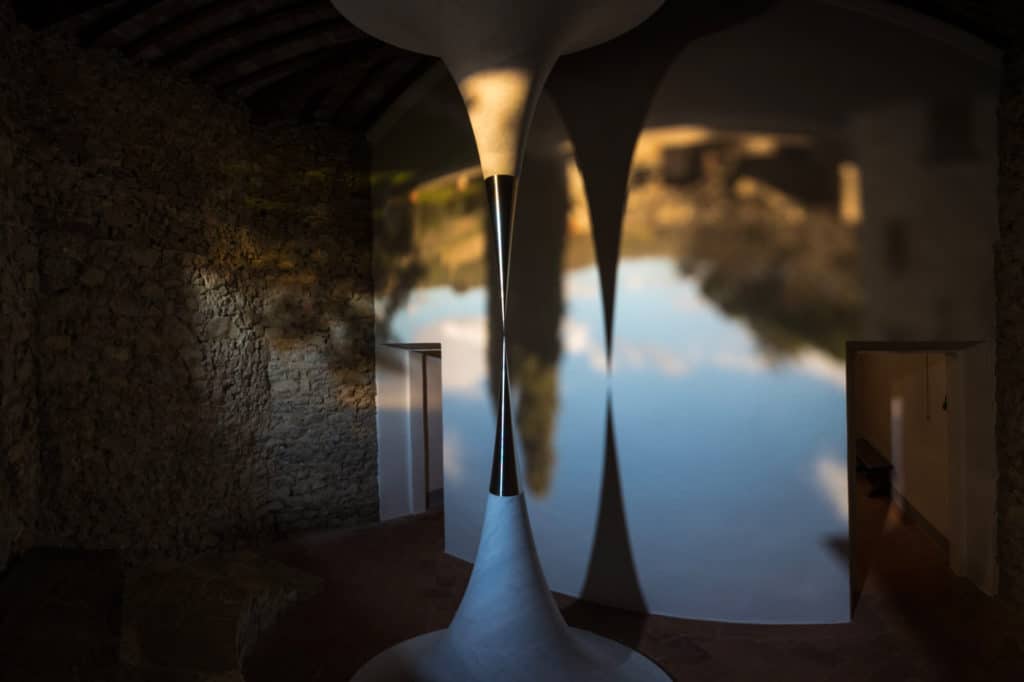Wind your way through Chianti
Greve, Castellina, Radda, Gaiole. These sleepy hillside hamlets make up the Tour de Force of the Chianti countryside, connecting the curvaceous hummocks that mark Firenze’s southern landscape to the rolling hills just north of Siena. The area is ripe with vineyards, Chianti Classico of course, and many are still family-owned and operated. Sprinkled throughout are the agristurismi, (those bed-and-breakfast farmhouses) that Tuscany is known for, farmsteads converted into peaceful hideaways for a relaxing country retreat. These once medieval farmhouses have in recent times often expanded into well-appointed villas with magnificently decked-out suites, permitting a more lavish countryside escape.
But Chianti is more than just beautiful landscapes and vineyards. Follow the winding state road SS222, fondly known as the Chiantigiana (Chianti road), as it snakes and swirls just outside of Gaiole rising to a beautiful medieval borgo, surrounded by vines bursting with Sangiovese grapes to Castello di Ama. A patchwork of vineyards and olive groves, the 18th century castel has barely changed over the centuries and owners Lorenza Sebasti and Marco Pallanti intend to keep it this way but added something to the gorgeous landscape.

Contemporary Art in a Historic Setting
Avid supporters of contemporary art, Sebasti and Pallanti created Castello di Ama per l’Arte Contemporanea more than two decades ago. Envisioned as a haven for promising contemporary artists, Sebasti and Pallanti forged a partnership with gallerist Lorenzo Fiaschi and Galleria Continua, a prominent international art gallery in neighbouring San Gimignano, in 1999 with the goal of bringing artists to engage in a deeper conversation with the terroir and allow the art to further transmit the magic of this land. One of the side benefits was their guests would experience even more wondrous beauty during their stay.
Once a deeply penurious region, Pallanti and Sebasti also saw this as an opportunity to plant new seeds in incredibly rich terroir as a way to contribute to the territory’s bright future. Since the project’s inception, one new piece of artwork every year is added to the collection just as the harvest yields a new vintage annually. Curator Philip Larratt-Smith joined in 2015 as the project’s curator. With a curated collection of sixteen pieces of internationally significant artworks from the last half-century, Castello di Ama has become a unique opportunity for visitors to experience world-class art in the heart of the Chianti countryside.
Experiencing Castello di Ama’s Art Collection
Upon arrival at the estate, a patchwork sculpture of painted bright rocks gives a lively welcome thanks to Cameroonian artist Pascale Marthine Tayou’s Le Chemin du Bonheur. Wondering through the property’s natural surroundings, one comes upon Daniel Buren’s mirrored wall, Sulle Vigne: Punti di Vista, which embraces the Chianti landscape as though it were a painting, providing breath-taking natural light for the adjacent garden. Further along, one discovers Aima, a light installation by Anish Kapoor in one of the estate’s two chapels and a sculpture installation, Confession of Zero by Hiroshi Sugimoto, in another. The meandering path of discovery continues as Carlos Garaicoa’s installation, Yo no quiero ver más a mis vecinos, makes its mark. The piece is a reproduction of some of the world’s most famous walls including the Great Wall and Berlin Wall.



Michelangelo Pistoletto’s L’Albero di Ama is the first to greet guests at the historic winery’s entry. A grand tree trunk holds a mirror within which offers refracted images, a light-filled play upon the idea of infinity. The winery is also home to Kendell Geers’ Revolution/Love neon installation as well as La lumière intérieur du corps humain by the late Chinese artist Chen Zhen whose meaningful piece is a reference to meridians and channels of energy. Both works are located amidst the barrels, a testimony to the atmosphere’s vibrant fermentation.
While most of the installations are easily visible, others are a secret to discover. The Topiary by Louise Bourgeois is hidden deep within the winery’s cellar, gently floating along the water of an antique sink. To view the piece, one must either get on their knees to peek through a tiny opening in the floor or take the journey via a precipitous ladder.
Visiting Contemporary Castello di Ama
Castello di Ama per l’Arte Contemporanea is a labour of love for Sebasti and Pallanti, an opportunity to create a space for artists to generously devote their time and passion in creating an ever-developing conversation with the land and its beauty

Originally owned in part by Lorenza’s family, Sebasti and Pallanti met in the early 1980s when Pallanti joined as the estate’s oenologist, having studied and trained in Bordeaux. Thanks to the twosome’s sound expertise, Castello di Ama’s wines have continuously ranked high in the world’s top lists over the last few decades.
For nearly 40 years, the duo has been continuously reimagining the estate and its castello (castle), investing in the vineyards, retooling the winery and solidifying it as a must-see destination in Chiantishire, complete with a restored five-suite 18th-century villa abode. During a stay at Villa Ricucci, guests can also tuck in to meals at Il Ristoro in the adjacent Villa Pianigiani.
